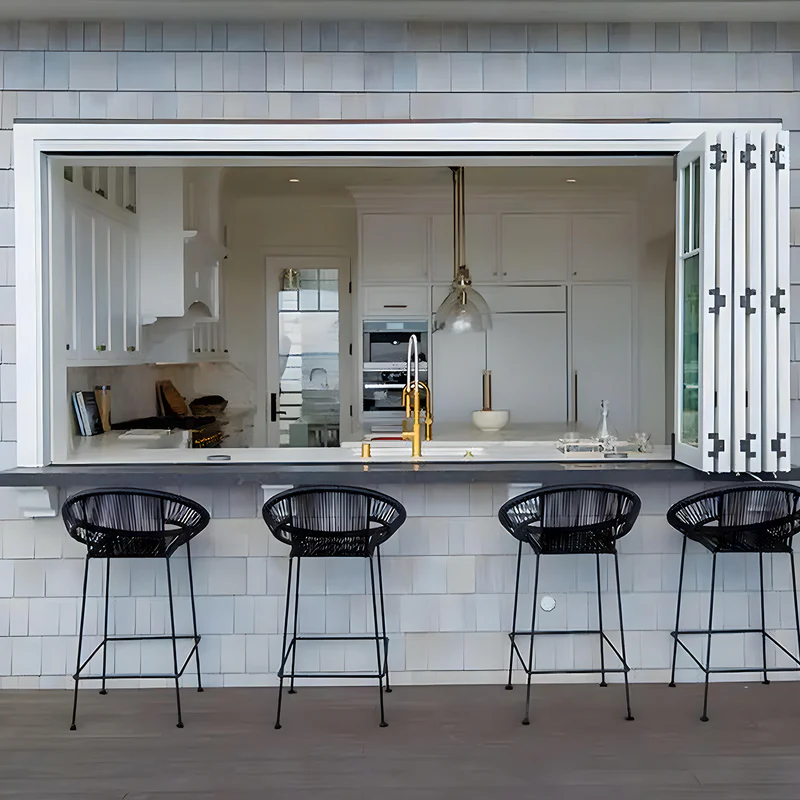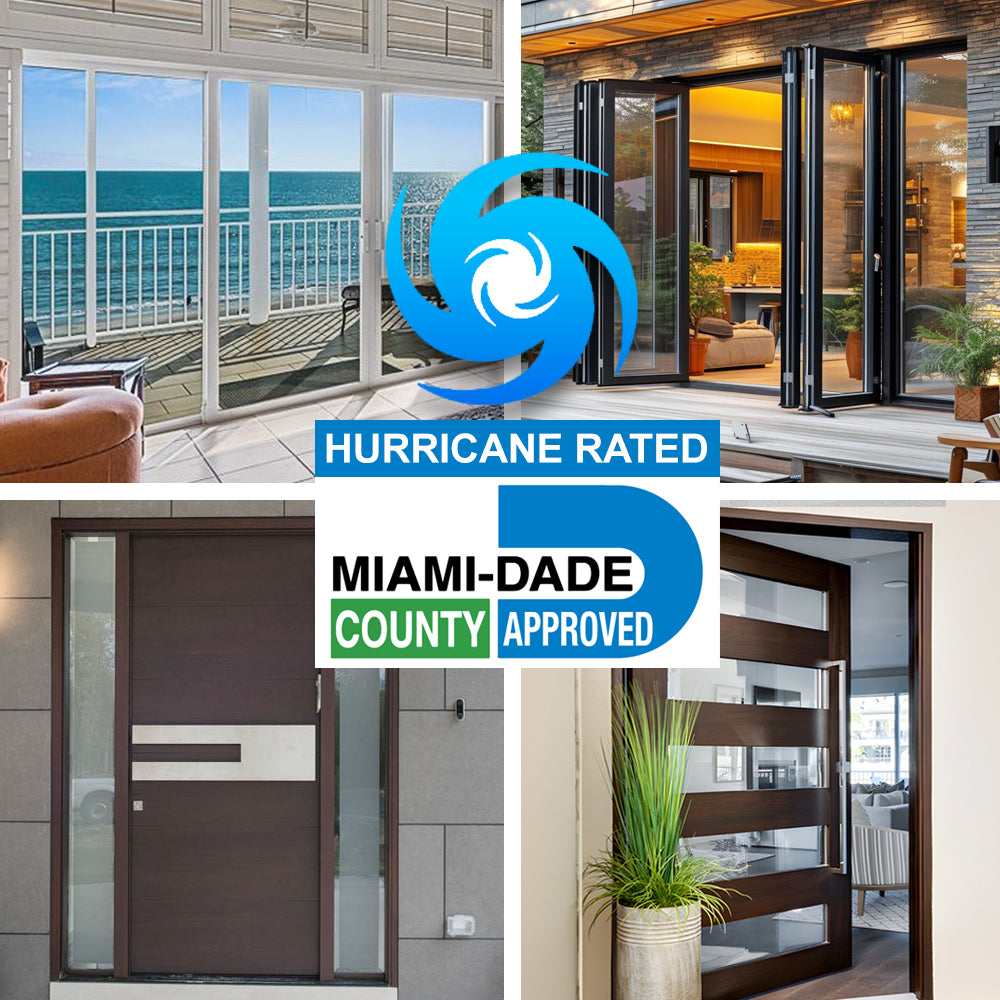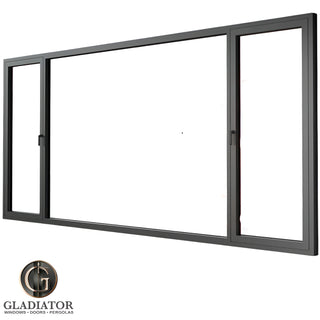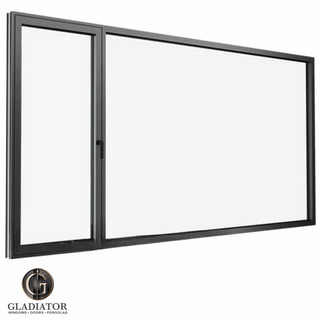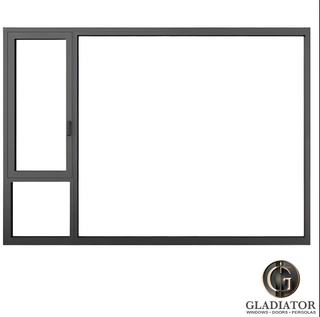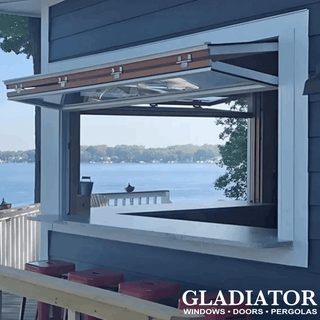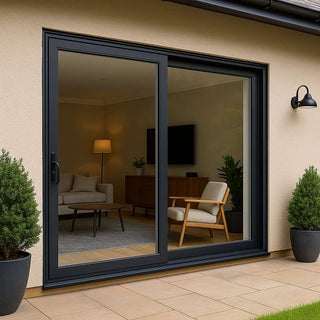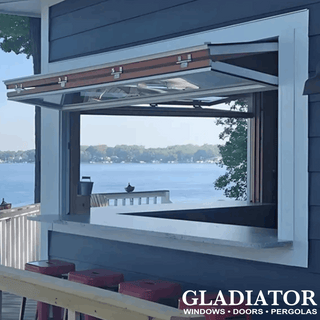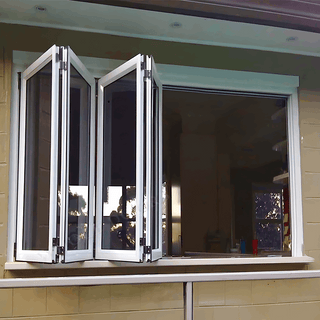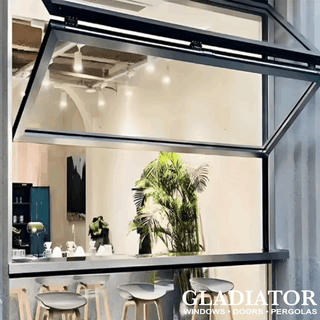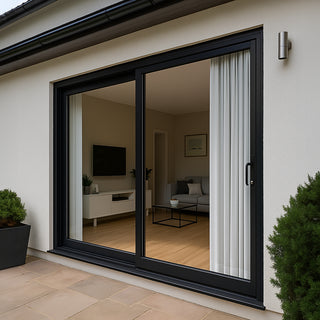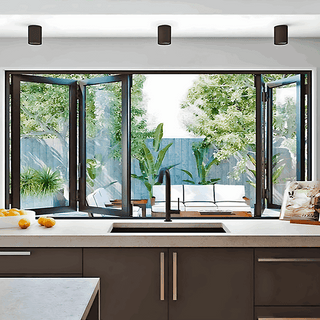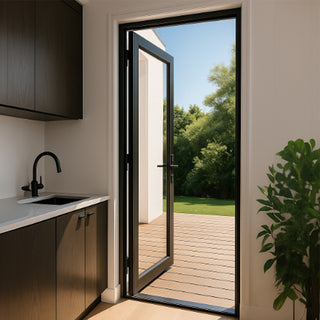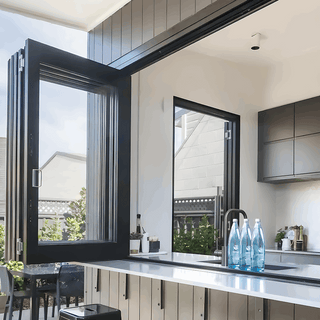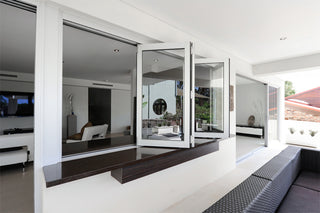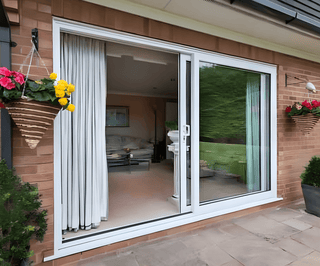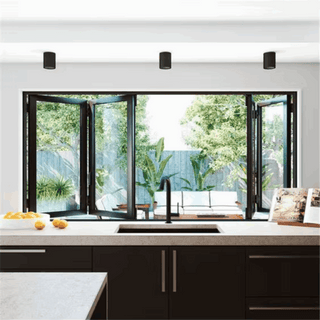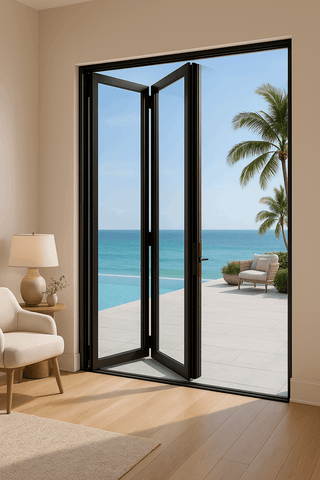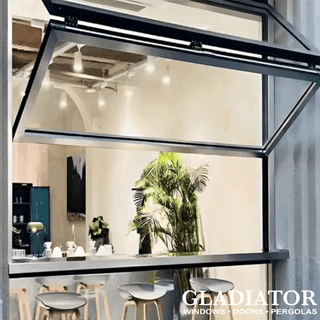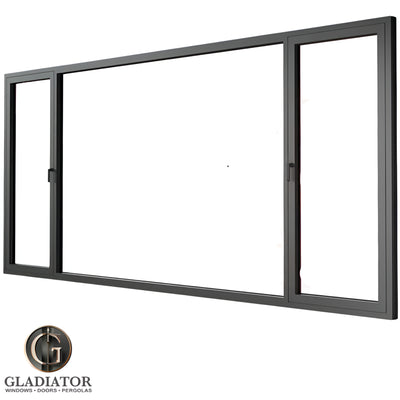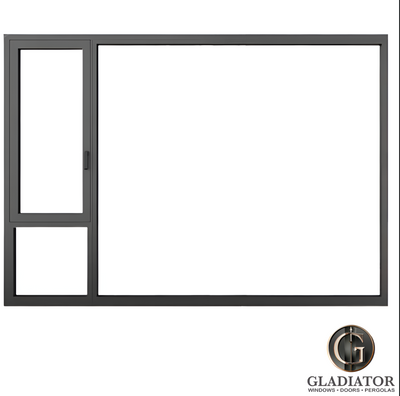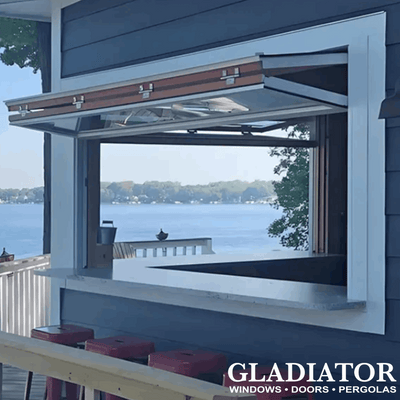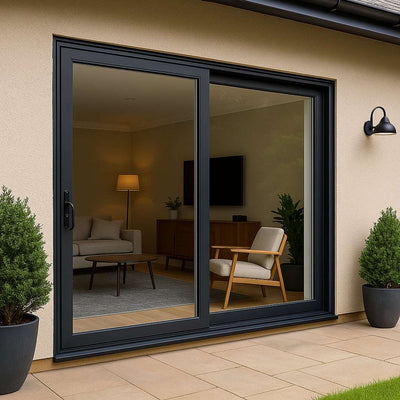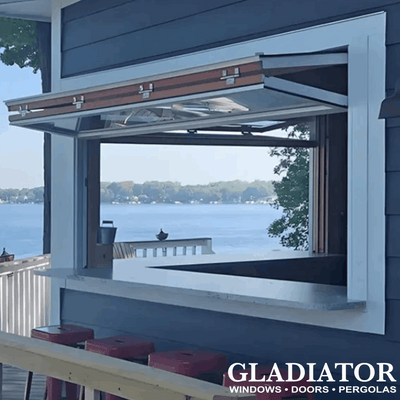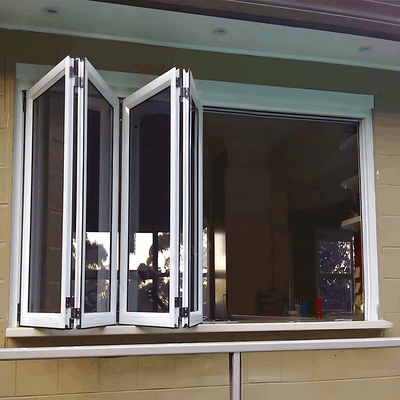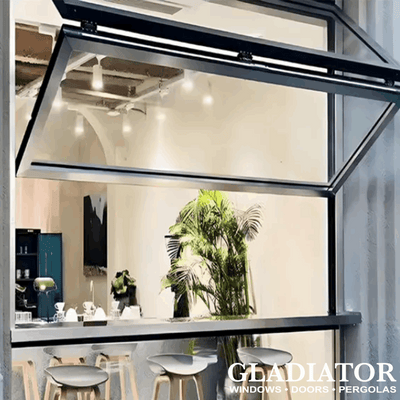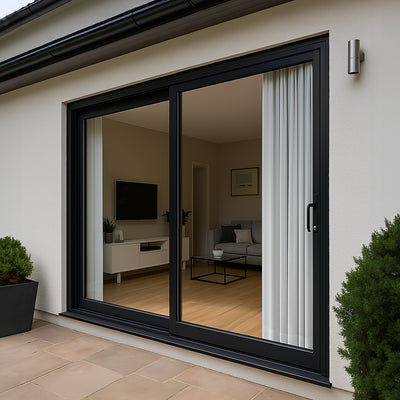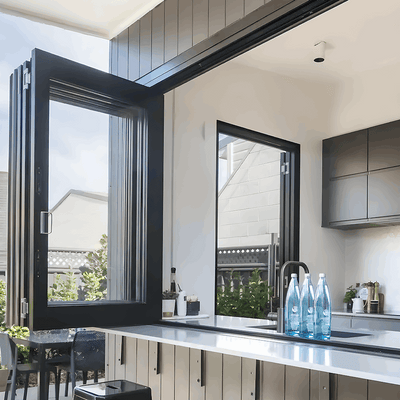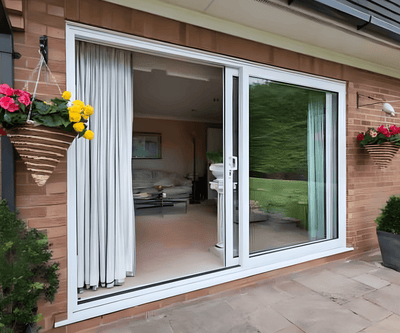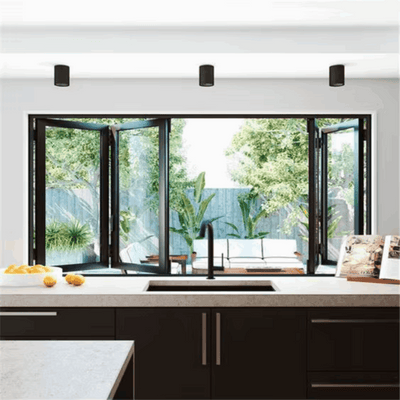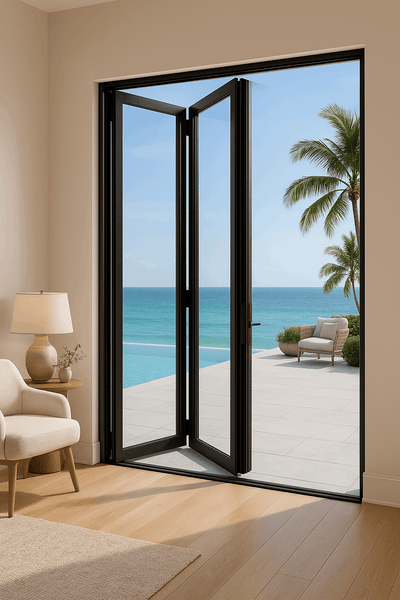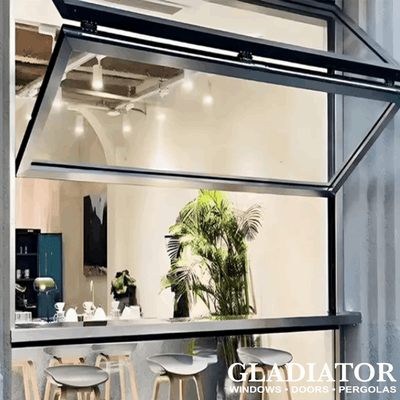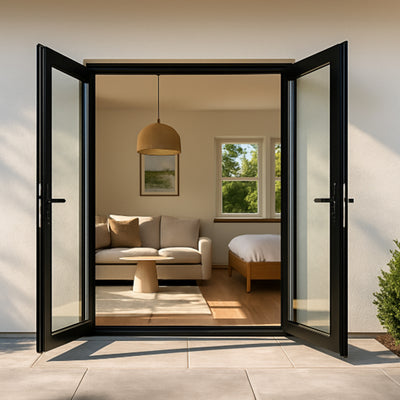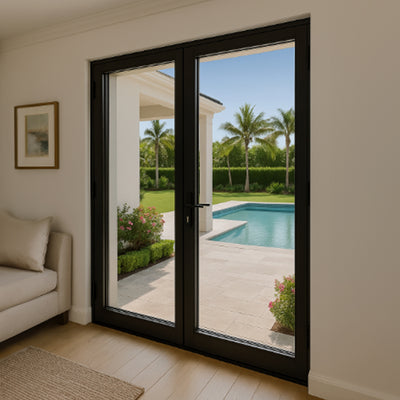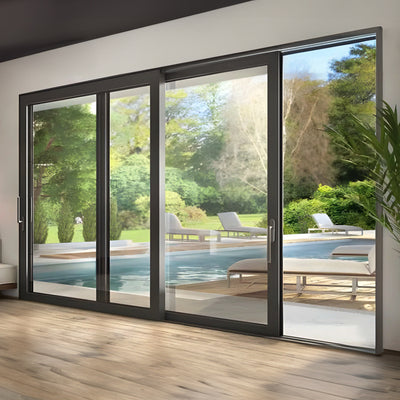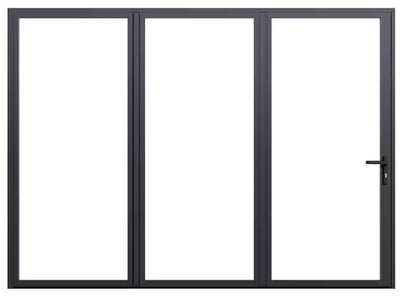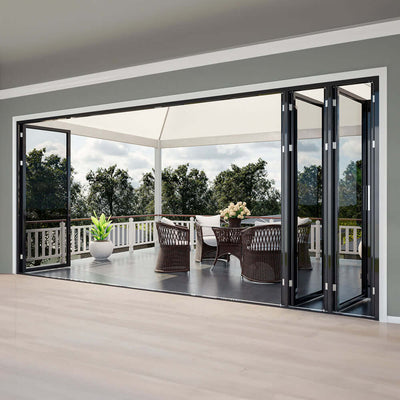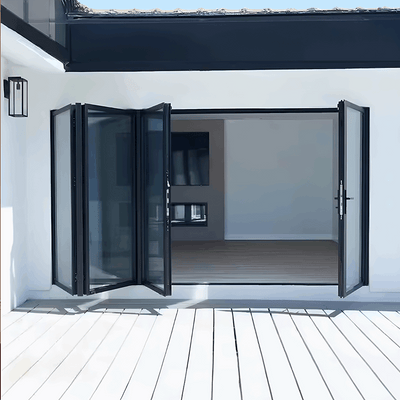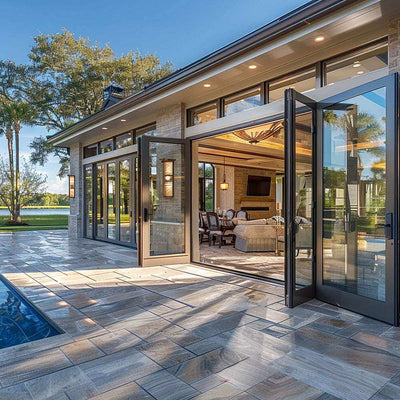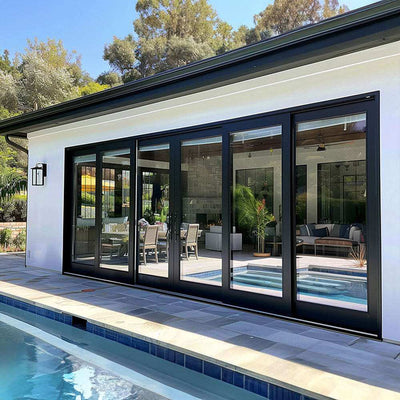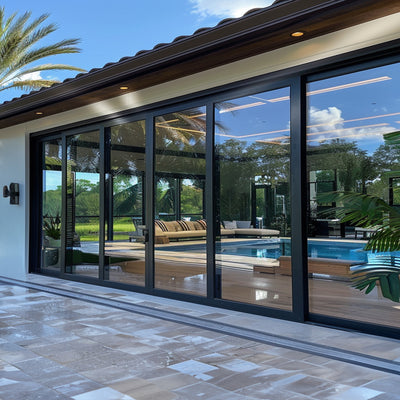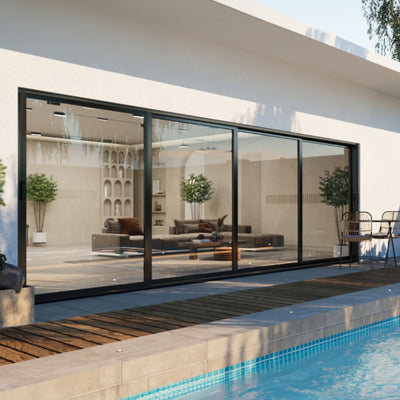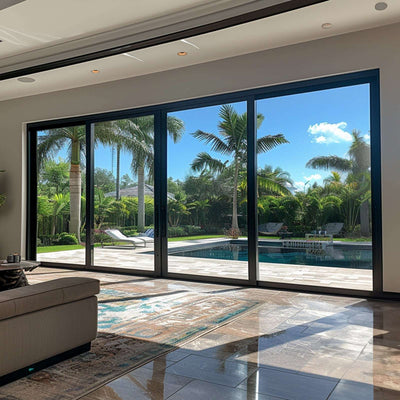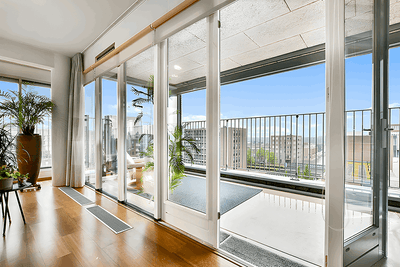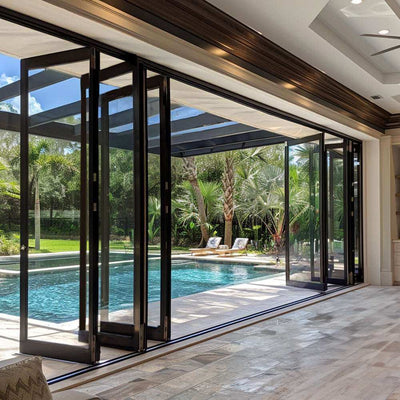The Hidden Impact of Window and Door Sealing
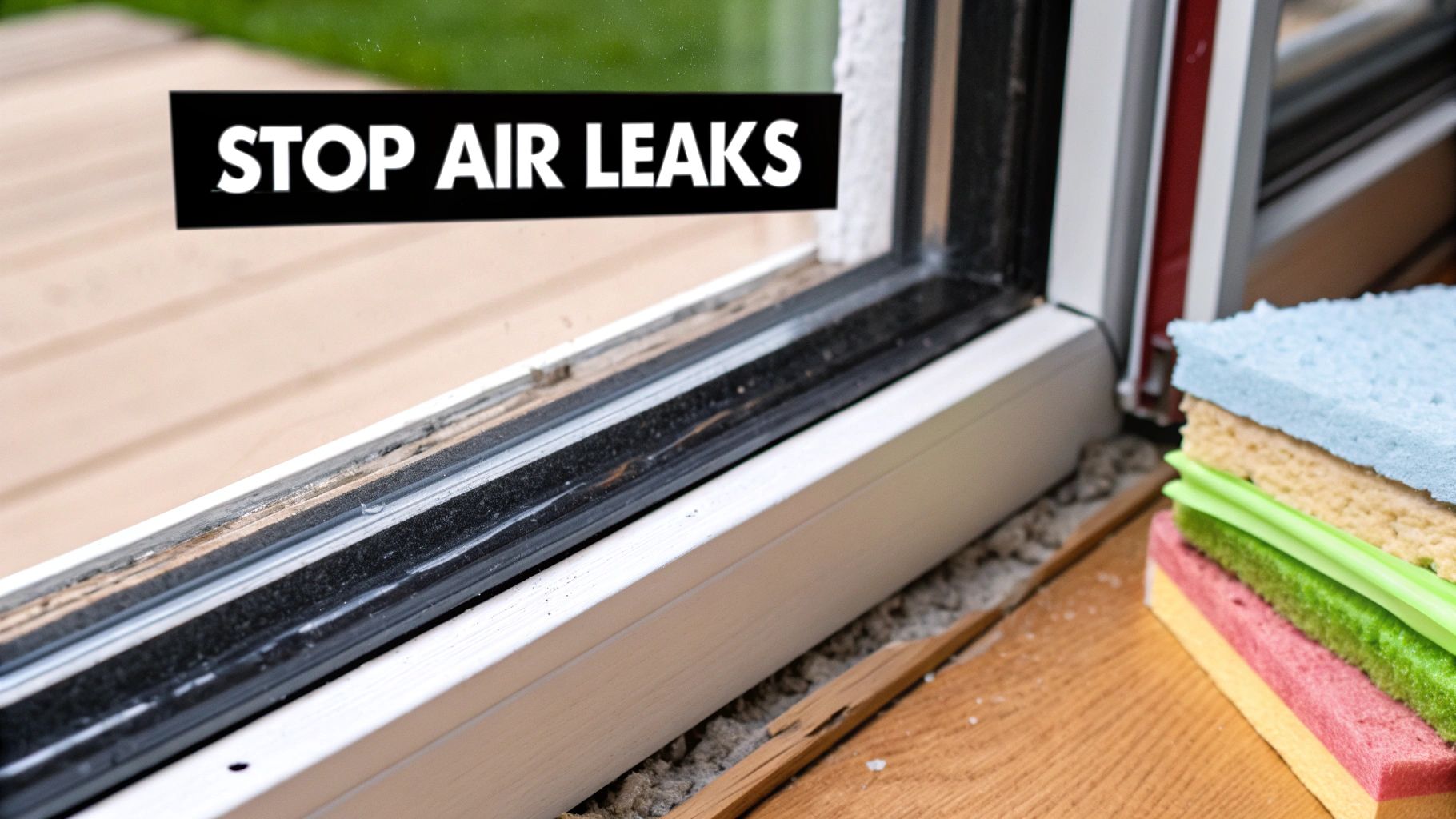
Proper window and door sealing often gets overlooked. Yet, it's incredibly important for a comfortable, energy-efficient home. Surprisingly, those small gaps and cracks can significantly impact your home's performance. Addressing these tiny openings can lead to big improvements in comfort and energy savings.
The Science of Sealing
Understanding heat transfer is key to effective sealing. Heat naturally moves from warmer areas to cooler ones. During winter, heat escapes your home through unsealed openings. In summer, the opposite happens – heat enters.
This constant temperature battle makes your HVAC system work harder, leading to higher energy bills. Proper sealing minimizes this heat transfer. This creates a more stable, comfortable indoor environment.
Air infiltration, the unwanted flow of air in and out of your home, also contributes to energy loss. Even small gaps can let a lot of air through, impacting heating and cooling costs. Effective sealing minimizes this infiltration, creating a tighter building envelope. The result? A more energy-efficient and comfortable home.
The importance of sealing in home maintenance is growing. The door and window sealing strip market (excluding automotive) is projected to reach USD 1.37 billion by 2028. It's expected to grow at a 4.4% CAGR from 2023. Growth in construction and energy-efficient building standards are fueling this demand, particularly in the Asia-Pacific region. The broader weatherstrip seal market, including automotive, is projected to hit USD 13.14 billion by 2034. Learn more about the weatherstrip seal market
Identifying Sealing Failures
Proactively addressing sealing issues starts with recognizing the signs. Obvious indicators include drafts. Feeling air movement near windows or doors suggests a sealing problem.
Subtle signs often go unnoticed. Temperature inconsistencies between rooms, unexplained higher energy bills, and excessive dust can all indicate inadequate sealing. These seemingly minor issues can point to significant energy waste and reduced comfort. Fixing these problems can save you money and improve your home's performance.
Beyond Saving Money: The True Value of Proper Sealing
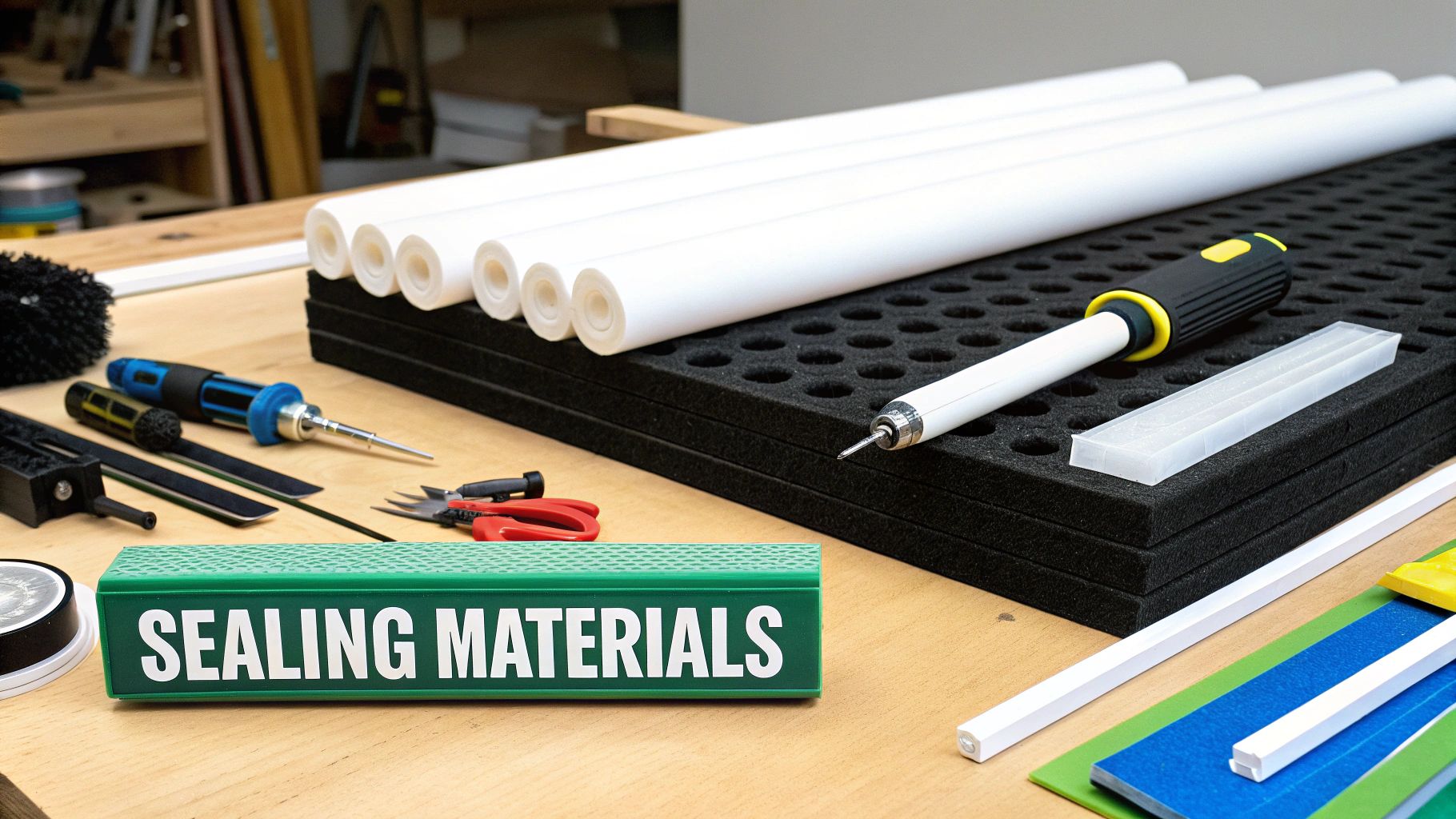
Proper window and door sealing offers a wealth of benefits that extend far beyond mere cost savings. It significantly impacts the overall performance and feel of your home, leading to a healthier, more comfortable, and peaceful living space. These improvements aren't just subjective feelings; they can be seen and measured in real-world scenarios.
Comfort and Indoor Air Quality
Proper sealing establishes a foundation for consistent temperatures throughout your home. This eliminates drafts and those perpetually cold spots that make relaxing difficult. No more constant thermostat adjustments! You'll enjoy a more consistently comfortable living experience.
Effective window and door sealing also drastically improves indoor air quality. By sealing gaps and cracks, you block pollutants, allergens, and outdoor particles from infiltrating your home. This is particularly beneficial for those with allergies or sensitivities to airborne pollutants.
Homeowners who've invested in quality sealing report remarkable benefits. Many have documented annual energy consumption decreases of 15-25% simply by addressing air leaks. This translates to substantial savings on utility bills. The enhanced indoor air quality also contributes to a healthier environment, reducing the impact of allergens and pollutants.
Noise Reduction and Increased Home Value
Effective sealing significantly diminishes noise intrusion from the outside world. Some homeowners report a 70% reduction in noise, effectively turning a noisy home into a tranquil oasis. This is a significant advantage for those residing in bustling urban environments or near busy roads.
Proper sealing not only enhances your day-to-day comfort but also increases your property's value. Real estate professionals consistently rank weatherization, including sealing, among the highest return on investment (ROI) improvements for both property value and marketability. This makes sealing a wise investment whether you plan to sell soon or simply want to improve your home's long-term value. You might be interested in: How to master window and door projects.
Quantifying the Benefits
The following table, "Window and Door Sealing Benefits Breakdown," provides a comprehensive analysis of measurable improvements across key home performance categories. It highlights the significant impact that proper sealing can have on various aspects of your living environment.
| Benefit Category | Specific Advantages | Potential Impact |
|---|---|---|
| Energy Efficiency | Reduced energy consumption, lower utility bills | 15-25% annual energy savings |
| Indoor Air Quality | Fewer allergens, pollutants, and particulates | Healthier living environment |
| Comfort | Consistent temperatures, elimination of drafts | Improved overall comfort and well-being |
| Noise Reduction | Less exterior noise intrusion | Up to 70% noise reduction |
| Home Value | Increased marketability, higher resale value | Significant return on investment (ROI) |
As this table demonstrates, the benefits of proper sealing are substantial and wide-ranging. From tangible financial savings to improved health and well-being, investing in proper sealing is a smart choice for any homeowner.
By understanding the true value of window and door sealing, homeowners can make informed decisions about home improvements. These upgrades offer a multitude of advantages, from immediate cost savings to long-term enhancements to health and comfort.
Sealing Materials Showdown: What Actually Works Where
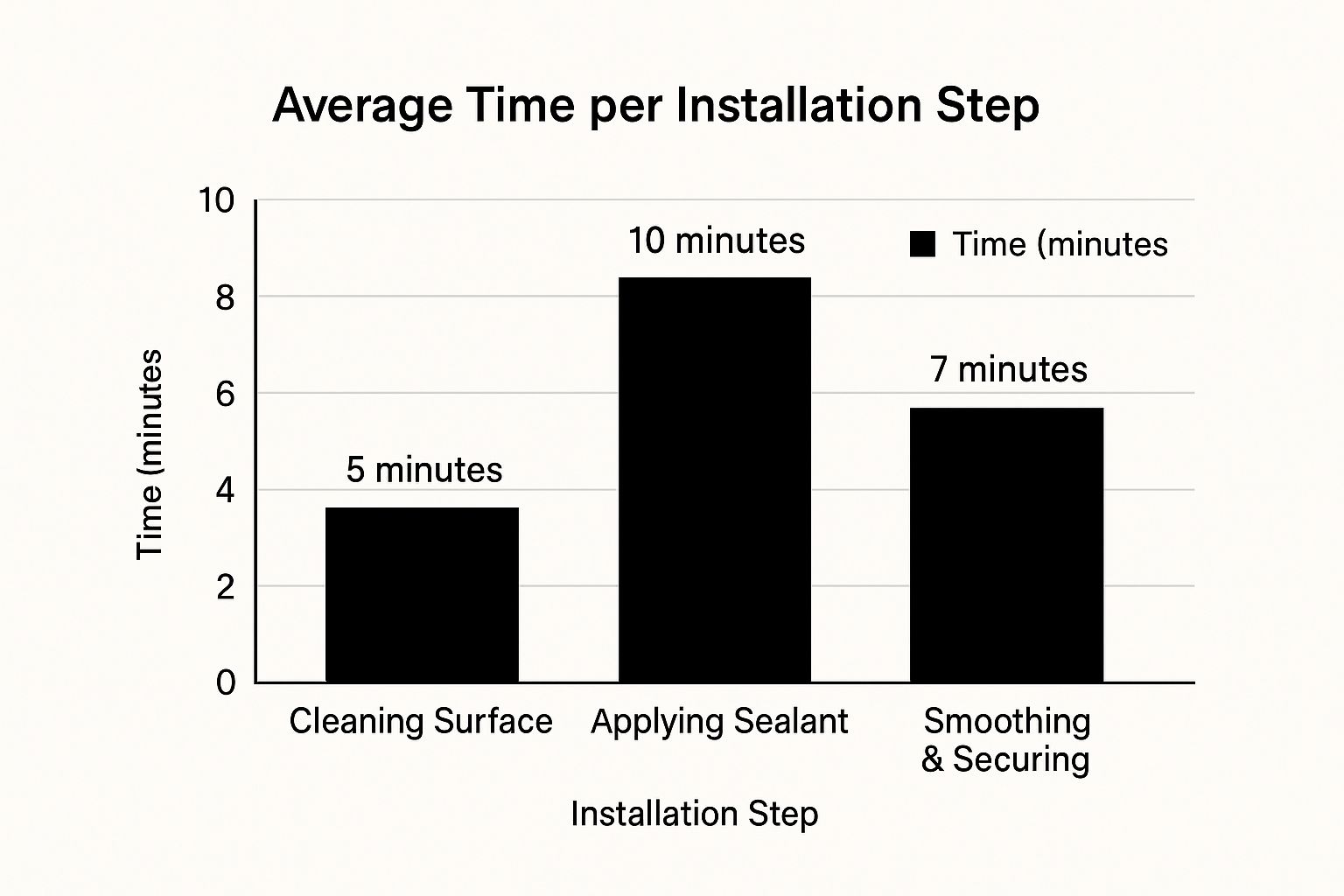
Choosing the right sealing materials for your windows and doors can be a daunting task. This section breaks down the pros and cons of various options, helping you make the best choices for your home. Understanding these differences is key to effective sealing.
Weatherstripping Options Decoded
Weatherstripping plays a vital role in sealing your windows and doors. Different types of weatherstripping exist, each suited for specific applications. Compression foam, for example, is excellent for filling irregular gaps, making it perfect for older windows.
However, it's important to note that foam can degrade faster than other materials. For high-traffic doors, metal V-strips offer superior durability. The right choice depends on the specific window or door you're sealing.
Felt weatherstripping offers a budget-friendly solution with decent insulation. Keep in mind that it may require more frequent replacements. Silicone rubber weatherstripping provides a balance of durability and flexibility, suitable for a wider range of window and door types.
Caulks: Silicone vs. Acrylic
Two popular choices for caulking are silicone and acrylic. Silicone caulk is renowned for its water resistance and flexibility, making it ideal for exterior applications. Acrylic caulk, on the other hand, is easier to paint and clean, making it a better fit for interior use.
Your local climate should also factor into your decision. Silicone's flexibility allows it to handle expansion and contraction caused by temperature fluctuations. Acrylic's paintability makes it easy to match your interior trim.
Durability and Cost Considerations
While some affordable sealing solutions can be effective in the short term, their durability may be limited. Premium options often come with a higher price tag but offer longer lifespans and superior performance. Balancing cost and durability requires considering your long-term goals.
Field tests have shown significant differences in how various materials withstand the elements. Some inexpensive foam weatherstripping might only last a few years, while premium silicone-based products can last a decade or more. This knowledge allows you to make smart decisions, weighing initial costs against long-term savings. For more information on windows and doors, check out this resource: How to master your window and door needs.
Material Properties and Local Climate
A sealant's effectiveness is heavily influenced by its ability to withstand specific climate conditions. Extreme temperatures, heavy rainfall, and UV exposure can all degrade sealing materials. Choosing materials designed to resist these factors is crucial for long-term performance.
For example, humid areas benefit from sealants with high moisture resistance. Regions with significant temperature variations need sealants that remain flexible and don't crack. The following table provides a detailed comparison of different sealing materials:
To help illustrate these differences, the data chart below compares various sealing materials across key metrics: durability, weather resistance, ease of installation, and cost.
| Material | Durability | Weather Resistance | Installation Ease | Cost |
|---|---|---|---|---|
| Silicone Caulk | 5 | 5 | 3 | Medium-High |
| Acrylic Caulk | 4 | 3 | 4 | Low-Medium |
| Foam Weatherstrip | 2 | 2 | 5 | Low |
| V-Strip Metal | 4 | 4 | 2 | Medium |
As shown, silicone-based sealants excel in durability and weather resistance, while foam-based products offer the easiest installation. This data visualization highlights the trade-offs you'll need to consider. Choosing the correct sealant ensures its longevity and maximizes effectiveness.
Interestingly, even the automotive industry is impacted by sealing technology. The global automotive window and exterior sealing system market is expected to reach USD 39.57 billion by 2030, growing at a 7.3% CAGR. This growth is fueled by increasing vehicle production and the rising demand for electric vehicles, which require specialized sealing solutions. Learn more about the automotive sealing market here.
DIY Sealing Success: Techniques That Actually Work
Turning drafty windows and doors into airtight barriers is a satisfying DIY project. But getting professional results takes more than just applying some caulk. This guide walks you through proven methods used by weatherization experts to ensure your sealing projects provide long-term comfort and energy savings.
Preparation Is Key: Setting the Stage for Success
Before you grab any caulk or weatherstripping, prepping the surfaces is vital. A thorough cleaning is crucial. Use a mild cleanser to remove dirt, dust, and old caulk. This allows the new sealant to adhere correctly. Check out our guide on How to master window and door sealing.
Taking accurate measurements is important to avoid costly mistakes. Measure the lengths and widths of gaps precisely to determine how much sealant you need. This prevents both overspending and running out of materials mid-project.
Window-Specific Strategies: Conquering Different Styles
Different window styles require specific sealing techniques. Casement windows, with their hinged design, need careful sealing around the entire frame and hinges. Double-hung windows benefit from weatherstripping in the channels where the sashes slide. Sliding windows often require sealant along the top and bottom tracks to stop drafts.
Understanding these differences ensures effective sealing and minimizes air leaks. Addressing each window type's unique characteristics leads to a better overall seal.
Mastering the Art of Caulking: Professional Secrets Revealed
Creating a smooth, durable caulk line is what separates a DIY job from a professional one. Having the right toolkit matters. A quality caulking gun, a sharp utility knife, and a caulk smoothing tool are essential for achieving professional results.
Applying caulk at the correct angle is critical. A 45-degree angle distributes the caulk evenly and creates a strong bond. Consistent pressure on the caulking gun ensures a smooth, unbroken bead.
Smoothing the bead with a wet finger or a caulk smoothing tool creates a professional, watertight seal. This also removes excess caulk and improves the final appearance.
Door Sweep Installation: A Step-by-Step Guide
Door sweeps are effective at blocking drafts under doors. Different flooring requires different sweep types. For carpeted surfaces, a sweep with a flexible vinyl or rubber flap works well. For hard surfaces like tile or wood, a sweep with a rigid brush, or a combination of brush and flap, is best.
Installing a door sweep is simple. First, measure the door's width. Cut the sweep to size. Then, attach it to the bottom of the door with screws or adhesive, ensuring it sits tightly against the threshold.
By following these proven techniques, you can confidently tackle sealing projects that offer immediate comfort and lasting energy savings. This DIY approach empowers you to improve your home's efficiency and create a more comfortable living space.
When to Call the Pros: Maximizing Expert Sealing Services
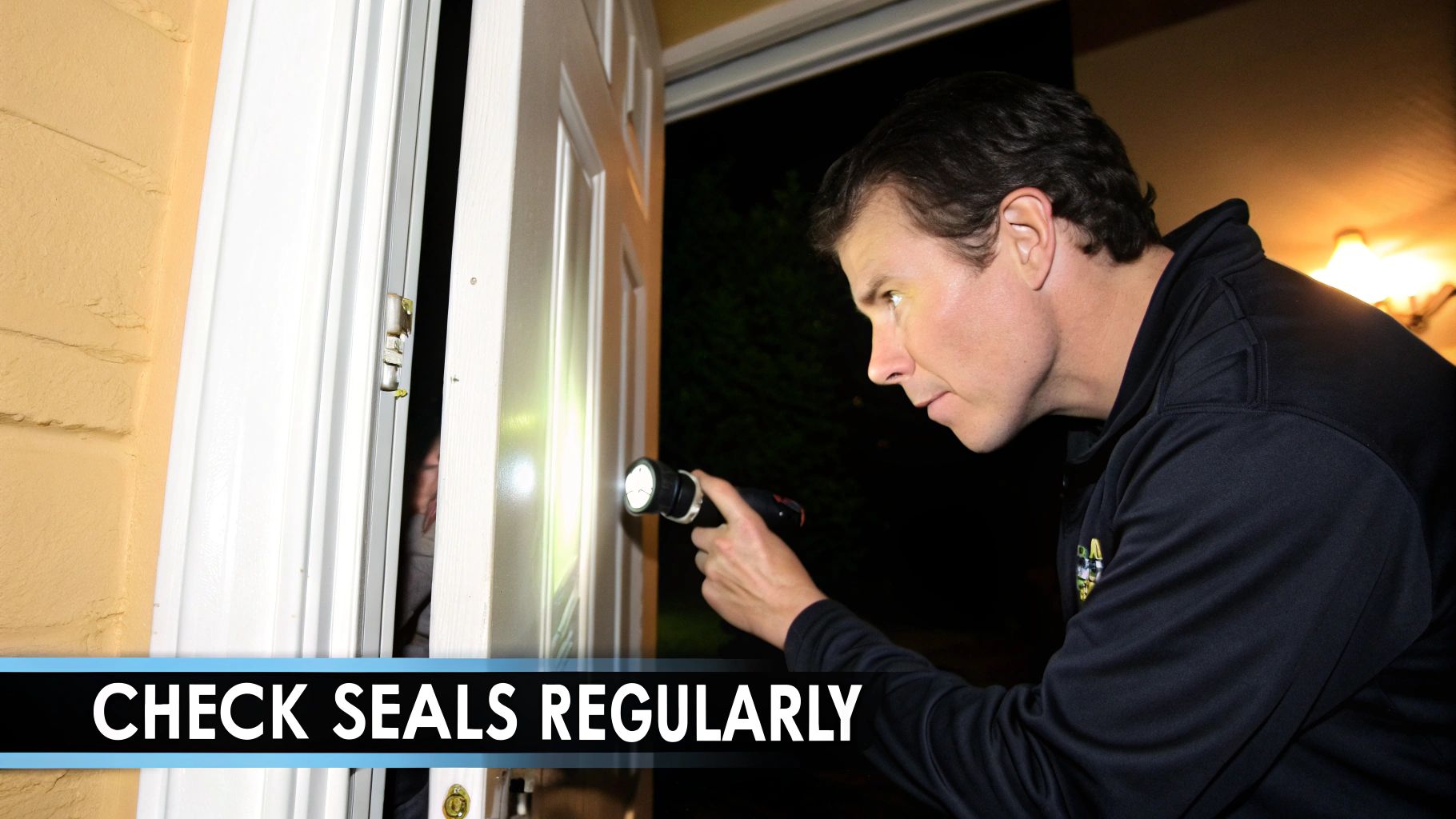
While many window and door sealing projects are perfect for DIY enthusiasts, some situations demand professional expertise. Knowing when to bring in the pros can save you time, money, and a lot of frustration, ensuring a job well done from the start. This allows you to enjoy the comfort of a properly sealed home without the hassle of a difficult project.
Recognizing Your Project’s Complexity
Some scenarios clearly call for professional window and door sealing services. Historic homes, for example, often pose unique challenges because of their age and the materials used in their construction. These older homes might need special techniques and materials to preserve their historical character.
Structural issues, like uneven settling or damaged frames, also require professional attention. Addressing these problems before sealing is vital for creating a long-lasting and effective seal.
Identifying Qualified Contractors: Beyond the Basics
Choosing the right contractor for your window and door sealing is crucial. Relevant certifications, such as those from the Air Barrier Association of America (ABAA), demonstrate a contractor's expertise in building envelope sealing.
Beyond certifications, asking the right questions can reveal a contractor's true skill. Discuss their experience with similar projects, the specific materials they recommend, and their approach to handling potential issues. This thoroughness helps ensure you select a contractor who can deliver quality results. Also, be cautious of unusually low bids, which may suggest the use of inferior materials or hurried workmanship.
Understanding the Costs: Setting Realistic Expectations
The cost of professional window and door sealing varies based on several factors. These include the size of your house, the number of windows and doors needing sealing, and the project's overall complexity. A typical home might cost between $500 and $1,500 for basic sealing. Larger homes or those requiring specialized services could cost significantly more.
You might be interested in: How to master sealing products. Understanding regional market trends offers additional insights. For instance, Asia-Pacific has historically held a large share of the sealing market, with nearly 40% of the global market value in automotive sealing systems. This is largely driven by robust automotive industries in countries like China and India. Even for non-automotive sealing strips, Asia-Pacific leads because of its rapid urbanization and infrastructure growth. Find more detailed statistics here. North America's sealing market benefits from stringent energy codes and trends toward high-performance buildings, while Europe experiences consistent growth due to retrofitting and sustainability initiatives.
When DIY Just Won't Cut It
Consider professional help if you encounter complex window styles or substantial water damage. Intricate window designs frequently require specialized tools and expertise. Significant water damage necessitates professional repairs before any sealing can be done.
Large-scale projects, such as sealing an entire house, are often better suited for professionals. Their efficiency and experience allow them to finish the project quicker and with better results than most DIY endeavors. Choosing professional window and door sealing when necessary provides lasting performance and peace of mind.
Extending Seal Life: Maintenance That Makes a Difference
Maintaining your window and door seals is a smart investment. By following a few simple maintenance practices, you can significantly extend their lifespan, saving money and ensuring they function effectively. Just like regular car maintenance, consistent upkeep of your seals prevents premature failure and costly replacements.
The Importance of Seasonal Checks
Regular inspections are crucial for catching minor seal issues before they become major problems. Performing seasonal checks, particularly in regions with significant temperature fluctuations, helps maintain effective sealing. It's similar to checking your car's tire pressure – a quick check can prevent bigger issues later.
-
Spring: Inspect seals for winter weather damage, like cracks or gaps. Clean them with a mild cleanser and look for signs of deterioration.
-
Summer: Check for wear and tear from heat and UV exposure. Ensure weep holes are clear for proper drainage.
-
Fall: Clean seals to remove debris and prepare for harsh winter weather. Check for gaps or cracks that might cause drafts.
-
Winter: Inspect seals for ice buildup, which can cause damage. Ensure proper closing and locking to maintain a tight seal.
Cleaning Techniques and Products
Proper cleaning is vital for maintaining seal performance. Use a mild cleanser and a soft cloth to clean your window and door seals. Avoid harsh chemicals or abrasive cleaners, which can degrade the seal material. Think of it like washing your car with a scouring pad – it would damage the finish. The same principle applies to seals.
Lubricating moving parts, like window tracks, with a silicone-based lubricant can also improve function and prevent premature wear, ensuring smooth operation and protection against moisture.
Common Household Items to Avoid
Certain household items can inadvertently harm your seals. Avoid abrasive cleaners, like steel wool, which can scratch and damage the material. Also, avoid harsh chemicals like bleach, which can degrade the seals over time. Even common cleaning products may contain chemicals that weaken seals, leading to early failure.
Repair vs. Replacement: Knowing the Difference
Knowing when to repair or replace a seal can save you money. Small cracks or gaps are often repairable using caulk or weatherstripping. However, extensive damage or significant deterioration necessitates replacement. Just like a worn-out tire, a damaged seal eventually needs replacing for optimal performance. This proactive approach, like regular car maintenance, prevents bigger issues down the line.
The Future of Window and Door Sealing
The world of window and door sealing is constantly changing. New materials and a desire for better energy efficiency are driving innovation. This means smarter, longer-lasting, and greener ways to seal our homes are on the horizon. These aren't just incremental improvements; they represent a fundamental shift in how we think about weatherization.
Smart Seals and Self-Healing Materials
Imagine seals that react to the weather. Smart seals, currently in development, use materials that change with temperature and humidity. These seals expand and contract, maintaining an ideal seal no matter the conditions. This dynamic approach could drastically improve energy efficiency by instantly minimizing air leaks.
Another exciting advancement is self-healing materials. Inspired by nature, these materials can repair minor damage on their own, significantly extending the life of your seals. This self-repair ability could reduce maintenance and the overall cost of sealing over time.
Integrated Systems and Real-Time Data
Technology is also changing how we seal our windows and doors. Sensors within seals could offer real-time performance data, notifying homeowners of potential leaks or problem areas. This data-driven method would allow for proactive maintenance. Addressing small issues early can prevent bigger, more costly repairs down the line.
Sustainable Sealing Solutions
The push for sustainable materials is impacting many industries, including window and door sealing. Bio-based and recycled materials are emerging as strong alternatives to traditional petroleum-based products. These sustainable options offer similar, and sometimes better, performance with less environmental impact. This reflects a growing trend toward sustainability within the construction industry.
By understanding these trends, homeowners can make smart decisions about their current investments and plan for the future of window and door sealing. This knowledge helps you choose solutions that not only meet your needs today but also align with future innovations.
Ready to explore options for your home? Gladiator Windows and Doors offers high-quality, custom solutions designed for superior performance and durability. We specialize in extra-large sliding doors, pivot doors, bi-fold doors, panoramic doors, and folding windows, along with fully loaded pergolas. We offer the lowest prices in the USA, backed by our Best Offer Guarantee. Get massive doors at a fraction of the cost, along with the best warranty in the industry!









